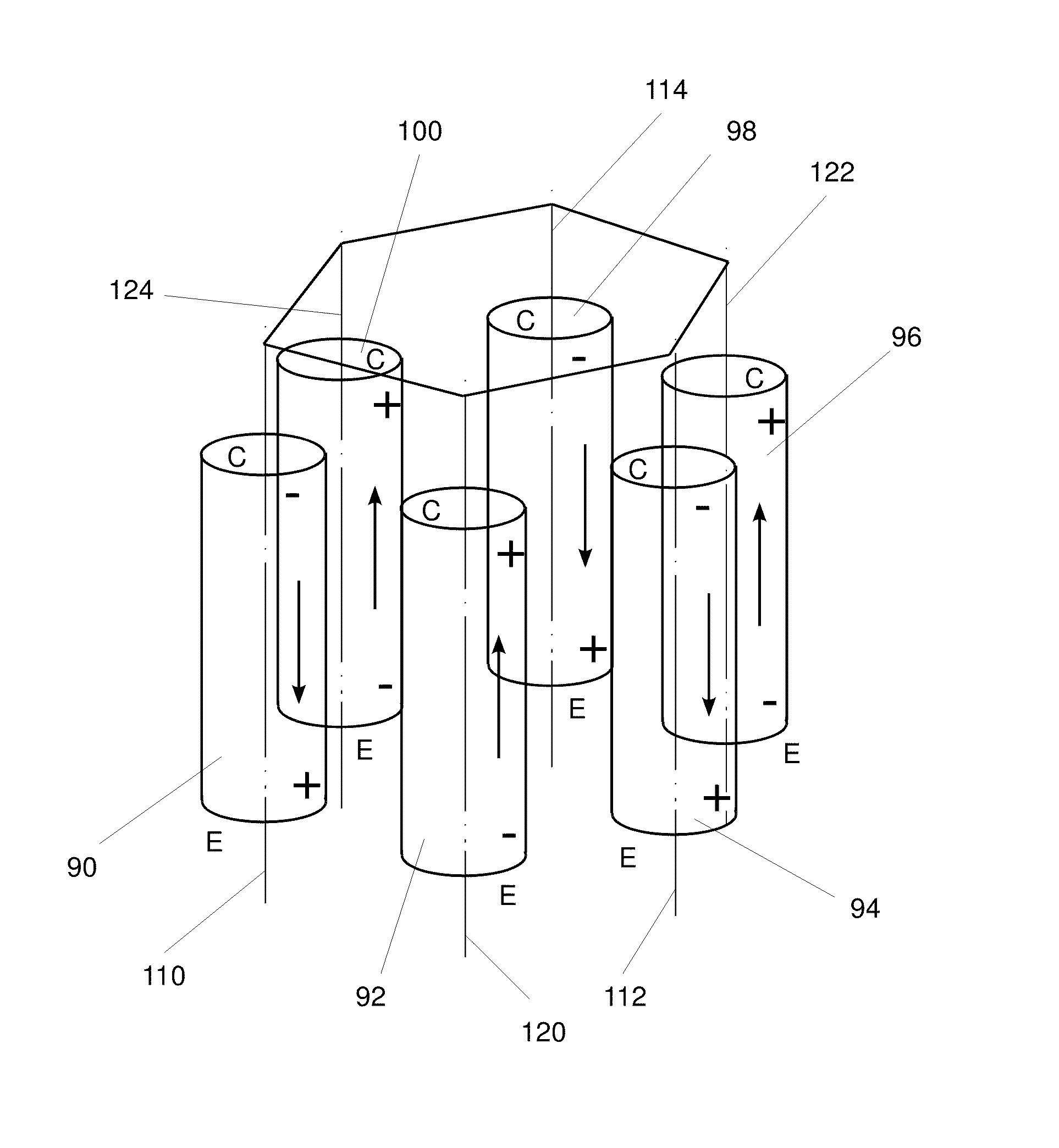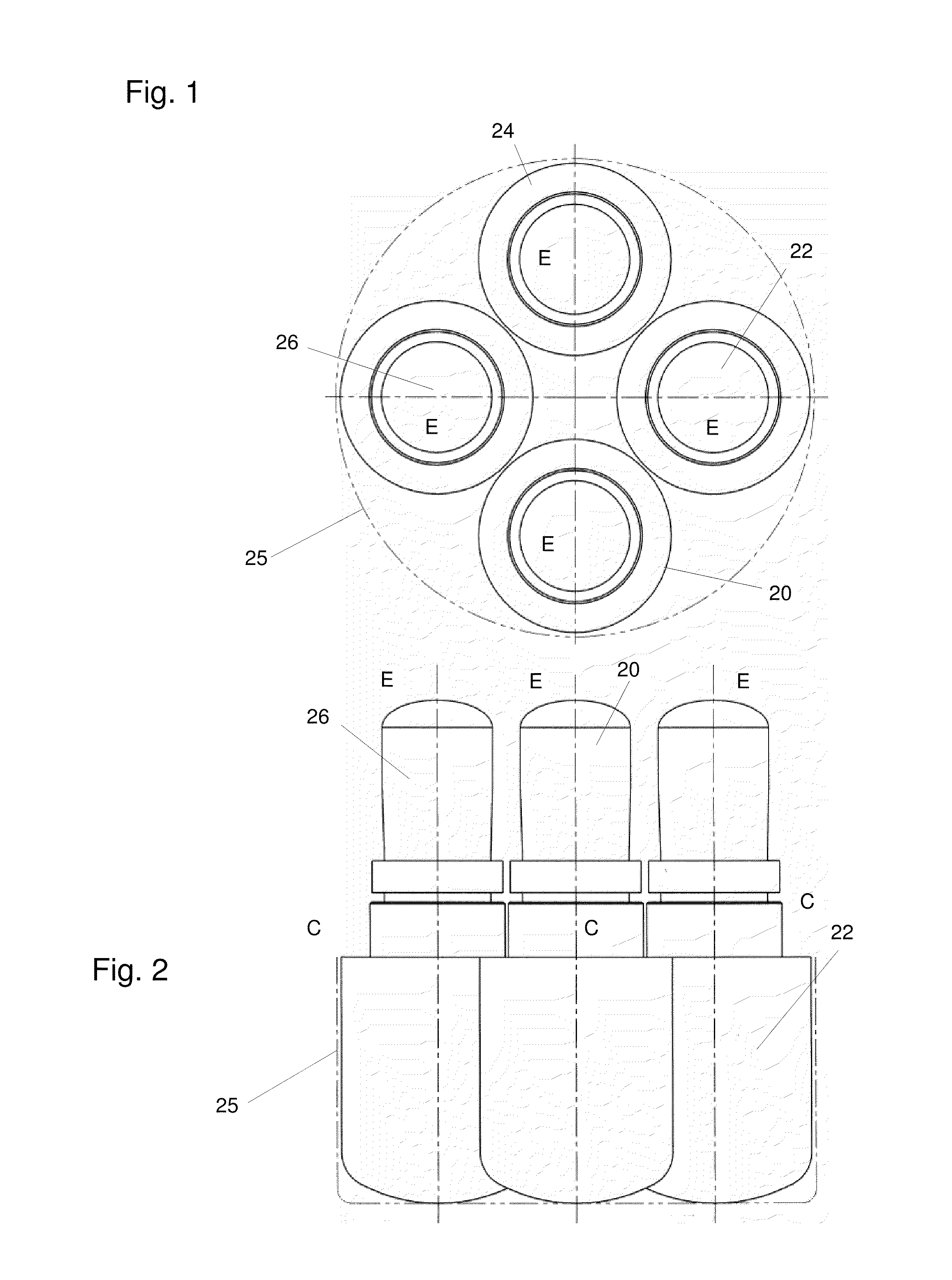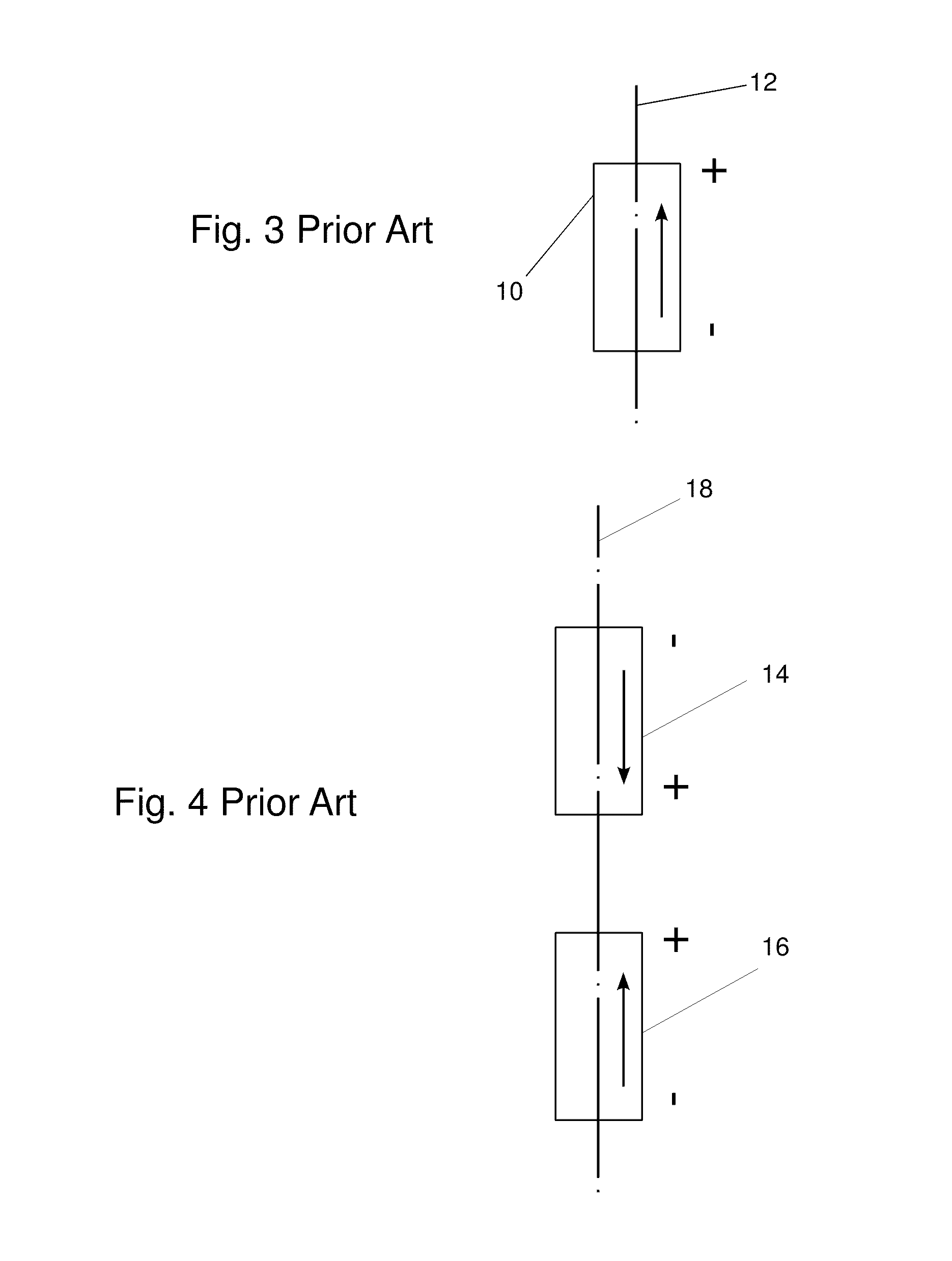Balanced multiple groupings of beta stirling machines
a technology of stirling machine and beta free piston, which is applied in the direction of machines/engines, safety/regulation devices, hot gas positive displacement engine plants, etc., can solve the problems of axial oscillation vibration, vibrational torque, and problem is made more complicated, so as to prevent or minimize vibration, reduce construction costs, and prevent or minimize vibration.
- Summary
- Abstract
- Description
- Claims
- Application Information
AI Technical Summary
Benefits of technology
Problems solved by technology
Method used
Image
Examples
Embodiment Construction
[0043]Provisional patent application Ser. No. 61 / 106,647 and Ser. No. 61 / 116,477 are hereby incorporated by reference into this application.
[0044]Definition of Terms
[0045]In describing the invention and its embodiments, there are terms used that are desirably defined and therefore the following definitions are stated.
[0046]FPS—an abbreviation for free piston Stirling.
[0047]Beta FPS machine—one beta Free piston Stirling engine or one beta free piston Stirling cooler. A beta FPS machine has a housing, a reciprocating power piston and a reciprocating displacer. They are well known in the prior art and groupings of them are the subject of this invention.
[0048]Balanced group of FPS machines—multiple, rigidly connected beta FPS machines for which the sum of their translational force vectors and the sum of their couples (torque vectors), both resulting from the acceleration (F=ma) forces of their reciprocating pistons, displacers and masses attached to them, both sum to zero.
[0049]Thermody...
PUM
 Login to View More
Login to View More Abstract
Description
Claims
Application Information
 Login to View More
Login to View More - R&D
- Intellectual Property
- Life Sciences
- Materials
- Tech Scout
- Unparalleled Data Quality
- Higher Quality Content
- 60% Fewer Hallucinations
Browse by: Latest US Patents, China's latest patents, Technical Efficacy Thesaurus, Application Domain, Technology Topic, Popular Technical Reports.
© 2025 PatSnap. All rights reserved.Legal|Privacy policy|Modern Slavery Act Transparency Statement|Sitemap|About US| Contact US: help@patsnap.com



